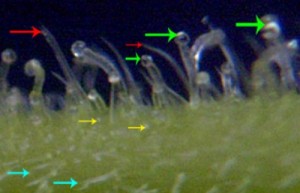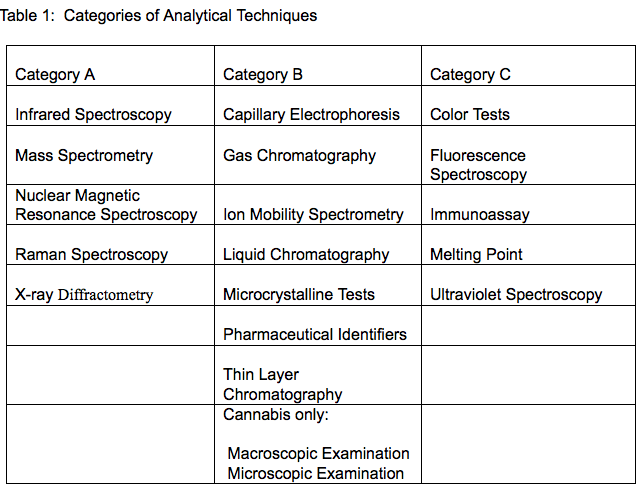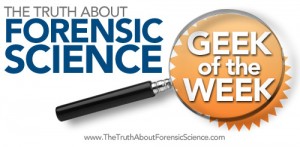The Forensic Science Geek of the Week
Please visit the www.TheTruthAboutForensicScience.com FaceBook fan page.
The week 44 “www.TheTruthAboutForensicScience.com Forensic Science Geek of the Week” honors goes to: Mehul B. Anjaria
MEHUL B. ANJARIA

- The Week 26 Forensic Science Geek of the Week: Mehul B. Anjaria
According to his website: “MBA DNA Consulting, LLC was founded with the goal of providing a bridge between science and the law. While forensic science is in theory science applied to matters of the law, it may only answer questions posed by one interest. I have come to realize that technical knowledge, skills, and abilities even when coupled with excellent presentation skills, do not make one a good consultant. It is in fact the ability for the scientific consultant to actually adopt the mindset of the attorney and understand the specific pragmatic goals of the consultation… Prior to founding MBA DNA Consulting, LLC I was involved in establishing California’s first ASCLD/LAB-International accredited forensic DNA laboratory. I am also interested in lending my expertise to organizations wishing to establish a DNA laboratory and/or attain ASCLD/LAB-International accreditation.” Among his listed services that he offers includes: DNA case file review, Witnessing of laboratory DNA testing, Expert witness DNA testimony, Assistance with DNA direct/cross-examination questions, Review of expert witness DNA testimony, Pro per DNA assistance and DNA Education/training. His resume is available here: Click here for the CV of Mehul B. Anjaria
Congratulations to our Forensic Science Geek of the Week winner!
All hail the www.TheTruthAboutForensicScience.com Forensic Science Geek of the Week!!!
See the challenge question that our winner correctly answered.
OFFICIAL QUESTION:

- Forensic Science Geek of the Week Challenge

- Forensic Science Geek of the Week Challenge
1. What do the green arrows, the yellow arrows, the red arrows and the cyan arrows denote?
2. Is this form of identification useful? Why or why not?
3. Preferably, what other tests need to be conducted to confirm this substance?
Our Geek of the Week answered:
These look like trichomes and cystolithic hairs on marijuana. While this microscopic inspection of the plant material may indicate marijuana, it is not an absolute identification. Combining this observation with a test such as Duquenois-Levine, and instrumentally identifying THC would provide a thorough ID of the presence of marijuana.
[BLOGGER’S NOTE: Here is our Honorable Mention:
Ron Moore, Esquire wrote: “They are the simple hairs, cystolithic hairs, and resin glands of a marijuana plant. It is considered an identification by some, but on the faulty premise that no other plant shares these features, which can never really be proven. Preferably the THC should be extracted and identified by GCMS.”
A note from me, just for more complete information:
These photomicrographs show the different types of trichromes that are consistent with what is thought to be marijuana. Botanists believe that the tiny hairs there are called cystolithic hairs. These cystolithic hairs contain mostly calcium carbonate. The red arrow points to these cystolithic hair. The yellow arrows point to bulbous glands, which are very, very small (2 to 8 cells big), and contain minimal amounts of cannabinoids. The blue arrows point to capitate-sessile glands. These capitate-sessile glands mature into capitate-stalked, which are the green arrows.
According to the Scientific Working Group for the Analysis of Seized Drugs (SWGDRUG) Recommendations, Edition 5.1, 2011-01-27:

3 Identification criteria:
SWGDRUG recommends that laboratories adhere to the following minimum standards:
3.1 When a validated Category A technique is incorporated into an analytical scheme, at least one other technique (from either Category A, B or C) shall be used.
3.2 When a Category A technique is not used, at least three different validated techniques shall be employed. Two of the three techniques shall be based on uncorrelated techniques from Category B.
3.2.1 For cannabis, macroscopic and microscopic examinations will be considered as uncorrelated techniques from Category B when observations include documented details of botanical features. Laboratories shall define the acceptance criteria for these features for each examination.
3.2.2 For exhibits of cannabis that lack sufficient observable macroscopic and microscopic botanical detail (e.g. extracts or residues), D9-tetrahydrocannabinol (THC) or other cannabinoids shall be identified utilizing the principles set forth in sections 3.1 and 3.2.
3.3 Botanists may identify cannabis and other botanical material utilizing morphological characteristics (category B) alone provided sufficient botanical features appropriate for identification are observed. Such examinations shall be made only by analysts competent in botanical identifications. In this context botanical competence applies to those examiners recognized as professional botanists or those assessed to be competent by such. Identifications of chemical components contained in botanicals (mescaline, opiates, psilocin, etc.) should rely on principles set forth in sections 3.1 and 3.2.
3.4 All Category A and botanical identifications shall have data that are reviewable. Where a Category A technique is not used, the requirement for reviewable data applies to category B techniques. Examples of reviewable data are
- printed spectra, chromatograms, digital images, photographs or photocopies (color, where appropriate) of TLC plates
- contemporaneous documented peer review for microcrystalline tests
- reference to published data for pharmaceutical identifiers
- For cannabis and botanical materials only: recording of detailed descriptions of morphological characteristics.
3.5 For the use of any method to be considered of value, test results shall be considered “positive.” While “negative” test results provide useful information for ruling out the presence of a particular drug or drug class, these results have no value toward establishing the forensic identification of a drug.
3.6 The laboratory shall employ quality assurance measures to ensure the results correspond to the exhibit. Example measures are:
- the use of two separate samplings
- sample identification procedures such as bar-coding and witness checks
- good laboratory practices (e.g., positive and negative controls, one sample opened at a time, procedural blanks)
3.7 In cases where hyphenated techniques are used (e.g. gas chromatography-mass spectrometry, liquid chromatography-diode array ultraviolet spectroscopy), they will be considered as separate techniques provided that the results from each are used.
3.8 The chosen analytical scheme shall demonstrate the identity of the specific drug present and shall preclude a false positive identification and minimize false negatives. Where a scheme has limitations, this shall be reflected in the final interpretation (see Part IVC – Uncertainty).]
The Hall of Fame for the www.TheTruthAboutForensicScience.com Forensic Science Geek of the Week:
Week 1: Chuck Ramsay, Esquire
Week 2: Rick McIndoe, PhD
Week 3: Christine Funk, Esquire
Week 4: Stephen Daniels
Week 5: Stephen Daniels
Week 6: Richard Middlebrook, Esquire
Week 7: Christine Funk, Esquire
Week 8: Ron Moore, B.S., J.D.
Week 9: Ron Moore, B.S., J.D.
Week 10: Kelly Case, Esquire and Michael Dye, Esquire
Week 11: Brian Manchester, Esquire
Week 12: Ron Moore, B.S., J.D.
Week 13: Ron Moore, B.S., J.D.
Week 14: Josh Lee, Esquire
Week 15: Joshua Dale, Esquire and Steven W. Hernandez, Esquire
Week 16: Christine Funk, Esquire
Week 17: Joshua Dale, Esquire
Week 18: Glen Neeley, Esquire
Week 19: Amanda Bynum, Esquire
Week 20: Josh Lee, Esquire
Week 21: Glen Neeley, Esquire
Week 22: Stephen Daniels
Week 23: Ron Moore, B.S., J.D.
Week 24: Bobby Spinks
Week 25: Jon Woolsey, Esquire
Week 26: Mehul B. Anjaria
Week 27: Richard Middlebrook, Esquire
Week 28: Ron Moore, Esquire
Week 29: Ron Moore, Esquire
Week 30: C. Jeffrey Sifers, Esquire
Week 31: Ron Moore, Esquire
Week 32: Mehul B. Anjaria
Week 33: Andy Johnston
Week 34: Ralph R. Ristenbatt, III
Week 35: Brian Manchester, Esquire
Week 36: Ron Moore, Esquire
WEEK 37: UNCLAIMED, IT COULD BE YOU!
Week 38: Pam King, Esquire
Week 39: Josh Lee, Esquire
Week 40: Robert Lantz, Ph.D.
WEEK 41: UNCLAIMED, IT COULD BE YOU!
Week 42: Steven W. Hernandez, Esquire
Week 43: Ron Moore, Esquire
Week 44: Mehul B. Anjaria



